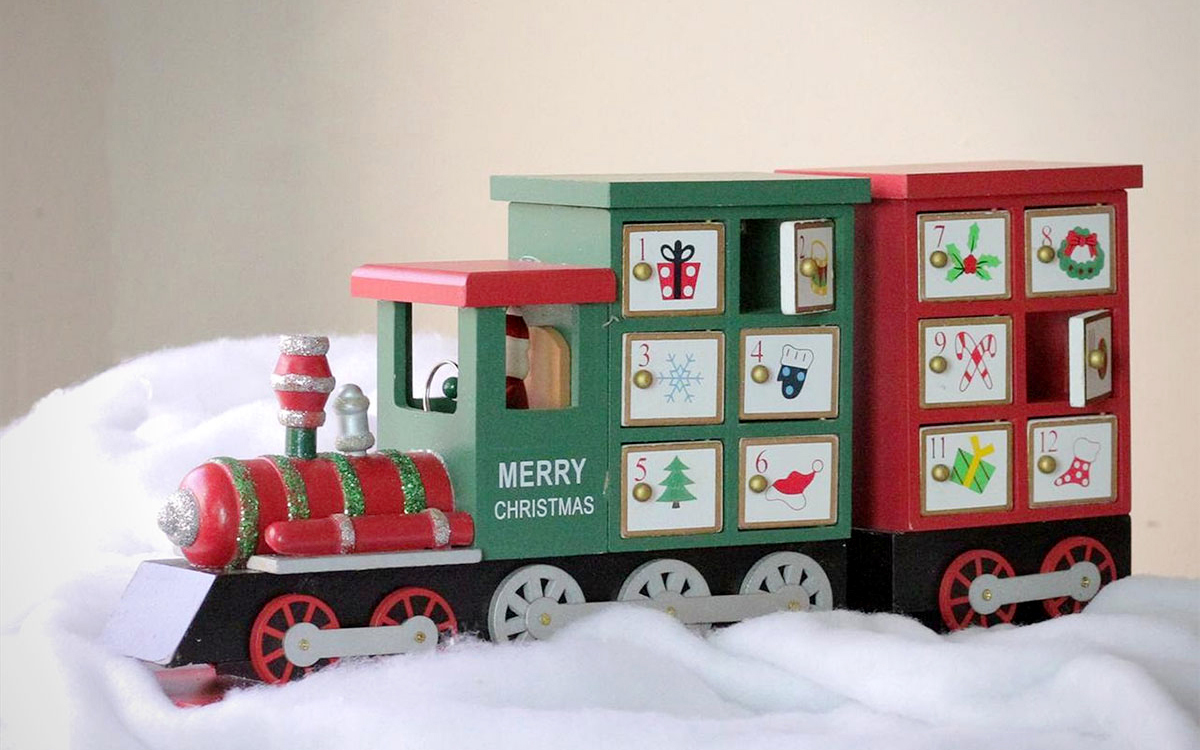
You may already be familiar with the advent calendar, a classic Christmas decoration with a centuries-old history. Traditional paper advent calendars depict colorful winter or religious scenes. You also can find advent calendars made of wood, fabric or other materials, shaped like houses, trucks, trains, Christmas trees and other familiar holiday symbols. Many advent calendars have drawers or pockets to hide small treats or toys.
Whatever their design, all advent calendars provide an attractive method for counting down the days until Christmas.
What is Advent?
Advent is a period of preparation, anticipation and reflection prior to Christmas. Faithful Christians await the anniversary of the Baby Jesus’ arrival. They prepare for the event in many ways, by setting up a nativity scene, decorating their homes, trimming Christmas trees and cooking favorite foods, making everything ready for a joyful celebration.
What is the Origin of Advent?
Scholars believe the season of Advent originated around the 4th century as a time of preparation for new Christians anticipating baptism. This event typically occurred on the feast of Epiphany, January 6.
The Latin word “adventus” means “coming” or “arrival.” Since Christmas is focused on the coming of the savior, and Epiphany marks the end of the Christmas season, Advent gradually became more closely associated with Christmas.
When is Advent?
The liturgical season of advent begins on the fourth Sunday before Christmas Day, which may fall anywhere between November 27 and December 3. Therefore, while there are always four Sundays in advent, the actual number of days during this period can vary.
A typical Christmas advent calendar begins on December 1 and marks the days of the month through Christmas Eve, December 24. This practical solution makes the calendar reusable from year to year.

What is an Advent Calendar?
An advent calendar is a picture or object featuring windows, drawers, dials, pockets or other moveable or removable pieces. Typically, the moveable parts are marked with the numbers 1 to 24, representing the days in December before Christmas. The purpose of an advent calendar is to move, remove or sometimes add a piece each day to visually gauge our progress toward Christmas Day.
The History of the Advent Calendar
In the mid-1800s, German families commonly counted the days to Christmas by placing chalk tally marks on a door or wall. Other families found other homemade ways to mark the days. Soon, publishers and newspapers began printing simple advent calendars.
Gerhard Lang, a German printer, is credited with designing the first decorative cardboard advent calendar featuring 24 colored pictures. Later, he added little doors that could be opened to reveal a surprise image. Recalling his childhood and his mother’s way of marking advent with cookies, Lang also began producing advent calendars with pieces of chocolate inside.
In the 1950s, Newsweek published a photo of President Dwight D. Eisenhower with his grandchildren holding an advent calendar. The picture helped popularize the advent calendar in America.
Why Do We Use an Advent Calendar?
Waiting can be hard when we’re anticipating something special. An advent calendar helps us not only keep track of the passing days, but maintain our focus on the joyous day that is Christmas. The daily ritual of updating an advent Christmas calendar provides a brief opportunity to reflect on the celebration to come.
For those whom Christmas is a religious holiday, the use of an advent calendar can be combined with a simple spiritual observance. Even for those who are not particularly devout, an advent calendar helps mark our progress as we move closer to Christmas.

The Meaning of Advent
Whether or not advent holds spiritual meaning for you and your family, an advent calendar is an attractive Christmas decoration with a practical purpose. It helps center us during a busy time of year, as well as entertain and reward children anticipating a favorite holiday.